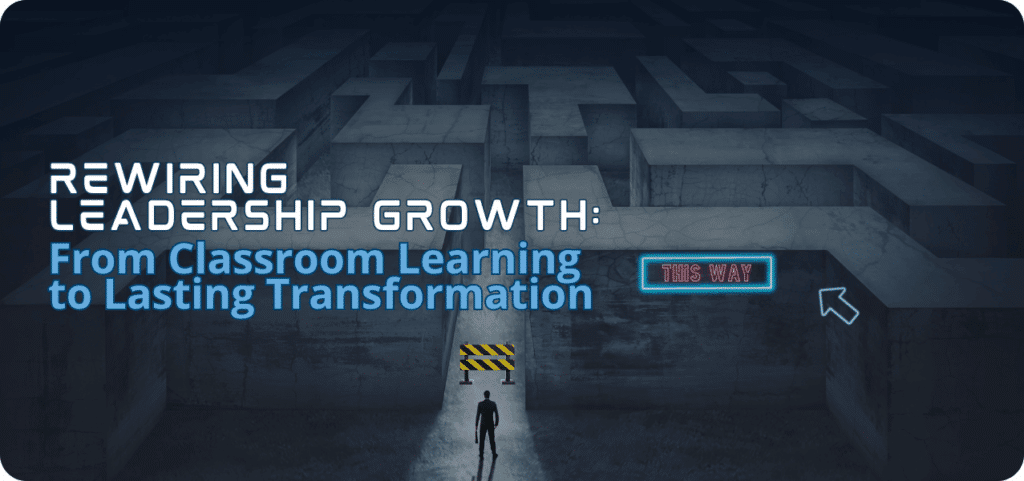Fusing Artificial Intelligence and Learning & Development

This is the second article in our AI and L&D series. For an introduction to Artificial Intelligence and its ethical considerations within the business context, read the first article here.
Artificial intelligence is a topic firing up conversations in every field, from the future of work to workforce augmentation. As AI rapidly grows more sophisticated, building new skills and competencies through L&D will become even more important for human workers and organizations alike. This leads us to the question: can Learning and Development be improved and advanced through artificial intelligence? If so, what are the opportunities?
In this article, we will break down multiple potential AI solutions for the L&D space while also addressing areas for improvement and continued deliberation.
Potential L&D Advancements Through AI
1.) Learning Analytics and ROI
Because of the long-term impact training programs have on a company’s growth, Learning & Development teams often struggle to prove a quantifiable Return on Investment (ROI) to executives. ROI is also difficult to show because we are dealing with humans, competencies, leanings and experiences which we don’t know how to measure yet. This generally leads to a devaluation of L&D’s impact on organizations. Value could be proved more substantially if L&D teams had more access to employees’ learning needs and company objectives beforehand. However, this more in-depth approach requires more time and money than executives are often willing to provide without clear ROI to back up such an investment.
This Catch 22 is solved by AI, which can analyze learner data quickly and at very low cost. By collecting information on learners through receiving insights into each employee’s core competencies, AI could help identify the most effective learning pathways for specific job functions. This could prove the impact of L&D more definitively, as well as gradually improve the quality of learning experiences over time.
The ethical considerations of data collection and storage must be deeply considered if this approach to AI is utilized. Individuals reserve the right to protect their sensitive personal information, especially to protect themselves from data leaks. Many organizations also may not want to provide this information to an outside consultant for similar security reasons. These ethical considerations also point to a general mistrust of AI by the public. These fears aren’t unfounded; AI is notorious for learning and perpetuating human biases (for example, facial recognition technology that struggles to accurately identify women and people of color). L&D professionals will have to earn and preserve trust in both their work and their AI’s work in order to succeed in introducing AI.
2.) L&D Chatbots
As complexity increases in our world, it grows more important to maintain an organization’s collective knowledge rather than knowledge held by singular individuals. While it’s easy to understand that “the answer is in the room,” it can be hard to know where to start in collecting and maintaining this information. An L&D chatbot could be another fascinating application for AI that addresses this issue. Not only could it act as an organization’s knowledge management system, a chatbot could also potentially test employees on previous learning modules to increase learning retention and build organizational competencies.
A chatbot’s effectiveness depends entirely on a company’s budget and desired outcomes. If the AI is complex, with layered algorithms produced through deep learning, the machine will become very expensive to produce and maintain. A chatbot with simple responses may be more cost-effective, but response time will be slower and more limited in scope. L&D professionals will have to assess available resources and the chatbot’s overall purpose in order to make the best decision for the organization.
3.) Automated L&D Content
Another great way to save time and money on L&D programming is through automation. By collaborating with complex AI similar to ChatGPT, the content curation process could be automated and grading could be completed within seconds. This frees up time for L&D professionals to devote to other aspects of their work.
AI that creates content requires human supervision to prevent the spread of misinformation. As it currently stands, AI that has undergone deep learning will occasionally “hallucinate,” or fabricate facts that are supported with nonexistent sources. This is a problem that has yet to be solved in the AI industry, and will need to be monitored by L&D workers if they choose to create with this technology. AI that gets crucial information wrong will not only increase the mistrust many individuals carry for this budding technology, but will also reflect poorly on the quality of L&D programming in general. Ultimately, AI itself works with the source material it is given. If the material does not work or is not applicable to the company, new technology won’t fix it. Humans are still responsible for the creative heavy-lifting when working with AI.
4.) AI, VR and Gamification
Experiential Learning is one of the most effective ways to increase retention, foster a positive relationship with learning and apply knowledge to the real world. While engaging with new ecosystems and cultures is the optimal way to learn, it’s still possible to get that “out of the classroom” experience through online solutions. When virtual learning is the more accessible option for an organization, AI in combination with Virtual Reality (VR) could directly expand the experiential possibilities that exist within these digital spaces.
AI and VR are both often used in video games, hence their connection to the concept of gamification. Gamification turns quizzes and learning activities into games, which helps learners become more engaged in the content. AI is a great companion to the gamification process because it can evaluate a player’s performance and suggest changes to the game that greatly improve their success rate over time. VR provides an additional immersive element that could take this kind of experiential learning to a new level.
One main question that arises with this application of AI: does the learning module still work if the technology is removed? When VR first hit the scene, it failed to revolutionize the industry as many suspected it would. This is because immersion for immersion’s sake doesn’t improve learning. VR needs to be utilized with clear purpose, as does AI. Otherwise, AI and gamification will lack a reason to exist, and the truly out-of-the-box opportunities this technology presents will fade away.
Conclusion
While AI has many applications to the future of L&D, we need to delineate the qualities of AI use from both a business and an L&D point of view. L&D content needs to be reliable, practical and applicable to the organization from the start. Otherwise, AI will only perpetuate existing problems within the learning module. With the right amount of work and dedication, there are clear opportunities for AI to rapidly transform the L&D industry. From improved analytics to spontaneous virtual simulations, the future of L&D is bright in combination with the marvels of Artificial Intelligence.
Author
Subscribe to get Access to Exclusive Content





